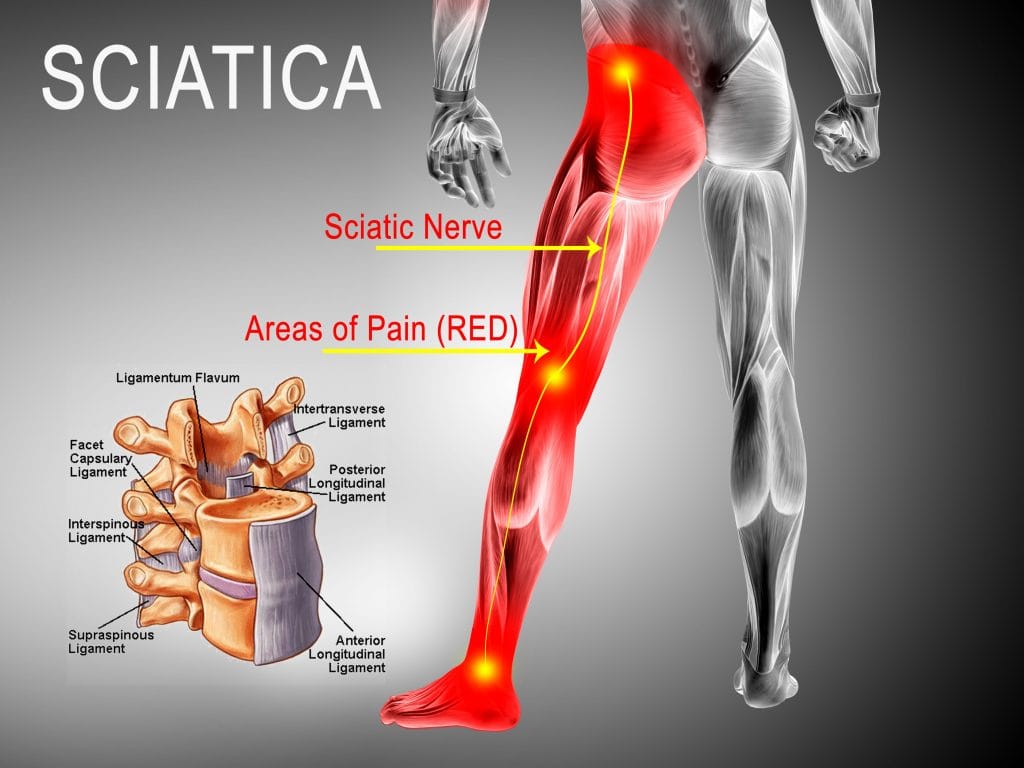
Sciatica pain can be excruciating, affecting your daily life and mobility. The good news is that in many cases, you can find relief through conservative treatments. In this article, we’ll explore how to permanently relieve sciatica pain and discover the top three exercises to alleviate discomfort.
How Can I Relieve Sciatica Pain Permanently?
Permanent relief from sciatica pain may be achievable through a combination of lifestyle changes, exercises, and other conservative treatments. Here are some effective strategies:
- Physical Therapy: Consult a physical therapist who can develop a tailored exercise program to strengthen your back and core muscles, improve flexibility, and alleviate pressure on the sciatic nerve.
- Heat and Ice Therapy: Applying heat or ice to the affected area can help reduce inflammation and soothe pain. Alternate between hot and cold packs for the best results.
- Medications: Over-the-counter pain relievers like ibuprofen or prescription medications can provide temporary relief. Follow your healthcare provider’s advice regarding medication use.
- Epidural Steroid Injections: In some cases, your doctor may recommend epidural steroid injections to reduce inflammation and pain. These injections can offer relief for several months.
- Lifestyle Modifications: Maintain a healthy weight, as excess weight can exacerbate sciatica. Pay attention to your posture, and avoid prolonged periods of sitting or standing.
- Massage Therapy: Professional massage can help relax tight muscles and improve circulation, which may reduce sciatic pain.
- Chiropractic Care: Chiropractors specialize in spinal adjustments that can relieve pressure on the sciatic nerve and improve your overall spinal health.
- Acupuncture: Some individuals find relief from sciatica through acupuncture, which involves the insertion of thin needles into specific points on the body.
- Strengthening Exercises: Engage in targeted exercises that strengthen the muscles supporting your spine, such as bridges, pelvic tilts, and leg raises.
- Yoga and Stretching: Yoga and gentle stretching routines can improve flexibility and reduce muscle tension, potentially alleviating sciatica symptoms.
- Sciatica-Specific Exercises: Incorporate exercises like the nerve flossing technique or the child’s pose stretch, which can specifically target the sciatic nerve.
What Are the Top 3 Exercises for Sciatica?
Exercise is often a key component of relieving sciatica pain. Here are the top three exercises that can help alleviate discomfort:
Knee-to-Chest Stretch:
- Lie on your back with your legs extended.
- Gently bring one knee toward your chest, holding it with your hands.
- Hold for 20 seconds, then switch to the other knee.
- Repeat 2-3 times on each side.
Piriformis Stretch:
- Lie on your back with your knees bent and feet flat on the floor.
- Cross one ankle over the opposite knee.
- Gently pull the uncrossed leg toward your chest until you feel a stretch in your buttocks.
- Hold for 20 seconds, then switch to the other side.
- Repeat 2-3 times on each side.
Cat-Cow Stretch:
- Start on your hands and knees in a tabletop position.
- Inhale, arch your back, and lift your head (cow pose).
- Exhale, round your back, and tuck your chin to your chest (cat pose).
- Repeat this sequence 10-15 times.
Remember to perform these exercises gently and within your comfort zone. If you experience increased pain, stop the exercise and consult with a healthcare provider.
In conclusion, permanent relief from sciatica pain is possible through a combination of conservative treatments, including exercise, physical therapy, and lifestyle modifications. By incorporating the top three exercises mentioned above into your daily routine and consulting with a healthcare provider for guidance, you can take significant steps towards alleviating sciatica discomfort and improving your overall quality of life.
Read about more chronic diseases and how you can manage them, here.
